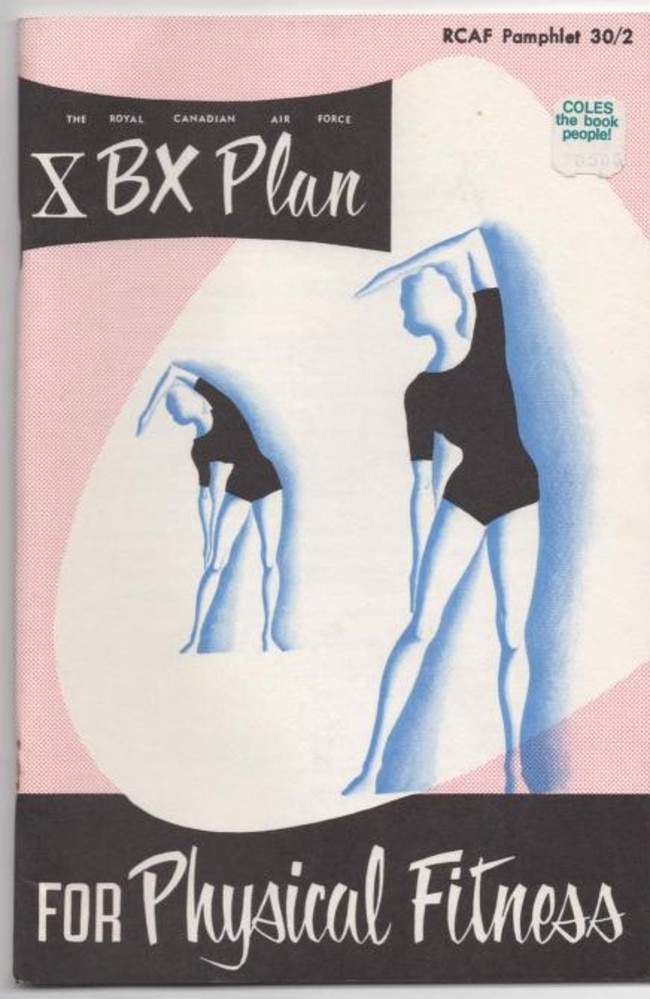How to get a body like Helen Mirren at 79
The actress has revealed that she stays fit with a 12-minute military workout from the 1950s. What do experts think of it?

Ifyou can devote just 11 to 12 minutes of your day to exercise, you can get fitter and stronger in 2025. Just ask Helen Mirren, who has been extolling the virtues of a military workout she has been doing almost daily for the past 60 years as the reason she is in such good shape - in July she will celebrate her 80th birthday.
Mirren recently told Woman’s Weekly that she is “a big believer” in the Royal Canadian Air Force XBX, a programme of ten basic exercises developed for female RCAF personnel in the late 1950s by Dr Bill Orban, a sports physiologist for the force. A similar, and more popular, 5BX plan featuring fewer versions of the same exercises was originally developed for male RCAF staff who were posted to remote locations without access to gym equipment. In his original booklet outlining the plan, Orban wrote that the routines “can be done in your bedroom or beside your bed in the barracks”.
The septuagenarian film star isn’t the only time-crunched high-profile individual to include the no-nonsense workout in their fitness regimen: King Charles reportedly does the circuit daily, while the Prince and Princess of Wales are on record as having tried it. But has it really stood the test of time as an effective fitness tool?
In 2021 researchers from McMaster University in Canada and the Mayo Clinic in the US investigated the effects of a modified 5BX plan for a study in the International Journal of Exercise Science with the aim of finding out whether the simple body-weight, or calisthenics, routine boosted cardiorespiratory fitness.

Over six weeks a group of previously inactive participants completed an average three sessions a week of an 11-minute workout based on the principles of the 5BX plan but including five modified exercises: modified burpees (minus the press-up), high knees running in place, split squat jumps, more high knees and squat jumps, each performed for 60 seconds at a self-selected “challenging” pace, interspersed with short periods of walking on the spot to recover between the bouts of effort and 60 seconds allowed for warming up and cooling down. A control group did no exercise training. The study, one of the first randomised, controlled trials to assess the outcome of body-weight interval training, found that endurance fitness improved by an average 7 per cent among the 5BX-ers and their leg muscle strength was also better. Unsurprisingly, fitness levels of the control group remained unchanged.
According to George Morris, an exercise physiologist and strength and conditioning coach at St Mary’s University, Twickenham, the fact that you can do 5BX at home in only 11 to 12 minutes “is undoubtedly its best selling point”. However, it does have some fitness kudos in that “it also combines resistance exercise with cardiovascular, aerobic exercise so ticks some very important fitness boxes”. With each of the exercises targeting major muscle groups, it is an all-over conditioning programme that, in time, will help to blast fat and have a valuable impact on improving endurance.

I broke off from writing to try it in my office. Orban’s fitness plan requires you to do increasingly harder routines as your fitness progresses, but stresses that “even if you feel able to start at a high level, don’t do it - start at the bottom”. I’m glad I did - it was manageable but a glance at the progressions was enough to make me sweat. The XBX circuit features four versions of exercise 1 - with more arm swings added - and extra knee-based push-ups, but I followed the more fashionable 5BX version. Both last 11 to 12 minutes.
Obviously, fitness gains will become more apparent the longer you stick at it, and Orban stressed it must be done regularly for the greatest effect. “With the principle of progressive overload incorporated into the circuit, it will provide ongoing new challenges to the body,” Morris says. “This helps muscles and the cardiovascular system to overload and adapt so that ultimately you become stronger and fitter.”
Orban also promised that if you do it regularly, the plan will provide you with “an adequate level of reserve energy needed for positive wellbeing and zestful energy”. And who doesn’t need that for the year ahead? He also advised not putting it off, and said: “Regardless of the time [of day] you choose, start today.” Here’s how.
The Royal Canadian Air Force 5BX Plan
Exercises in the 5BX plan get more challenging as you get fitter and progress through the different phases, but remember that the aim is to cram additional moves, some of them more challenging, into the allotted time, not to increase the duration of each exercise or of the total workout, which remains at a manageable 11 to 12 minutes even if you are super fit. Morris says that people with back or joint problems may need to substitute some of the exercises, such as replacing full sit-ups with more push-ups or running with high-knee marching. “Avoid any exercise that causes pain or aggravates underlying problems,” he says.
Ideally, you should aim to make the programme a daily habit, but three to five times a week is sufficient to see improvements. “Do not move up to the next level until you can do your present level, without excessive strain or fatigue,” Orban instructed. Off you go.
Warming up and cooling down: In the original guidance booklet the advice is to use exercise 1 as “an inbuilt method of warm-up” as it stretches and loosens muscles for what’s to follow. However, Morris says that as more is now known about the benefits of warming up, including in the prevention of injury, you should aim for a little longer. “Ideally a warm-up should be more than just a single flexibility move as its role is to bridge the gap between complete rest and maximum intensity of something like the 5BX workout,” Morris says. “I would suggest incorporating an aerobic style warm-up such as two to five minutes of progressive intensity walking on the spot to increase heart rate, breathing rate and muscle temperature so that you are fully primed for exercise.” Morris also suggests including 60 seconds of on-the-spot walking as a cool-down to bring the body back to a resting state.
Exercise 1 (for two minutes)
Stand with feet hip-width apart, arms in the air. Bend forward to touch the floor, then stretch up and into a backwards bend. Keep knees slightly flexed.
Beginners: Start with 4-8 repetitions and build up to 14-20 over 4-6 weeks.
Medium: Press the floor with both hands at the bottom of the move. Start with 14-20; build to 22-30 repetitions over 4-6 weeks.
Advanced: Press the floor with both hands, touch outside left foot, outside right foot and circle the arms back to the start. Aim for 24-26 repetitions; build to 28-30 repetitions over 4-6 weeks.
Super athletic: Raise hands above the body, reverse-clasped so that palms are on the outside. Touch floor at outside left foot, between feet, press the floor once, touch floor outside left foot, do a full circle bend of the body bending as far back as possible, keeping hands tightly reverse-clasped throughout. Aim for 24-26 repetitions; build to 28-30 repetitions over 4-6 weeks.
Exercise 2 (for one minute)
Lie on your back with feet six inches apart and arms at the sides. Sit up just far enough to see your feet. Keep legs straight and make sure head and shoulders clear the floor.
Beginners: Aim for 3-9 repetitions, building to 10-20 repetitions over 4-6 weeks.
Medium: Sit up to a vertical position at the top of the move. Aim for 10-15 repetitions, building to 16-23 over 4-6 weeks.
Advanced: Sit up and touch your toes. Aim for 18-19 repetitions, building to 21-22 over 4-6 weeks.
Super athletic: Sit up and simultaneously lift both legs, aiming to touch the toes in a V-position. Aim for 35-41 repetitions, building to 43-50 over 4-6 weeks.
Exercise 3 (for one minute)
Lie on your front with your hands under your thighs, palm upwards. Raise your head and one leg a few inches off the ground. Repeat using legs alternately. Keep legs straight at the knee and make sure thighs clear your palms.
Beginners: Aim for 4-12 repetitions, building to 13-18 over 4-6 weeks.
Medium: Raise head, shoulders and both legs. Aim for 13-21 repetitions, building to 23-33 over 4-6 weeks.
Advanced: Raise head, shoulders, arms, chest and both legs. Aim for 40-44 repetitions, building to 46-50 over 4-6 weeks.
Super athletic: Raise arms, head, chest, shoulders and both legs as high as possible. Keep arms and legs straight with chest and thighs completely off the ground. Aim for 29-34 repetitions, building to 35-40 over 4-6 weeks.
Exercise 4 (for one minute)
Lie on your front with your hands under your shoulders and palms flat on floor. Straighten your arms, pushing your upper body upwards but keeping knees on the floor. Bend your arms to lower yourself back to the starting position. Keep your body straight from the knees and make sure your arms are fully extended. Your chest must touch the floor to complete one movement.
Beginners: Aim for 2-6 repetitions, building to 11-13 over 4-6 weeks.
Medium: Straighten arms to lift body off the floor so that only palms and toes remain touching the floor. Aim for 9-14 repetitions, building to 15-20 over 4-6 weeks.
Advanced: Lying on your front, place palms on the floor parallel to ears and approximately 12 inches from your head. Straighten arms to lift the body (keep toes and palms on the floor). Your chest must touch the floor to complete one movement. Aim for 17-28 repetitions, building to 30-42 over 4-6 weeks.
Super athletic: Lying on your front, place palms on the floor parallel to ears and approximately 12 inches from your head. Straighten arms to lift the body (keep toes and palms on the floor) and slap chest with your left hand. Return left hand to the floor, lower so that chest touches the floor and repeat, slapping the chest with the right hand at the top of the movement. Alternate in this way. Aim for 26-32 repetitions, building to 34-40 over 4-6 weeks.
Exercise 5 (for six minutes)
Running on the spot. Lift your feet about four inches off the floor and count one step each time your left foot hits the ground.
Beginners: After every 75 steps, do 10 scissor jumps - stand with your right arm and left leg extended forward and your left arm and right leg backwards. Jump up and change the position of the arms and legs before landing. Aim for 100-260 steps, building to 280-400 steps over 4-6 weeks.
Medium: After every 75 steps, do 10 “astride” jumps - feet together, arms at side, then jump to land with feet apart and arms raised to just above shoulder height at the sides. Return with a jump back to the start position. Aim for 335-425 steps, building to 440-500 steps over 4-6 weeks.
Advanced: After every 75 steps, do 10 semi-squat jumps. Bend the knees, place hands on knees, keeping arms and back straight. Jump powerfully to an upright position in which the feet leave the floor. Land on the heels, return to the semi-squat position and repeat. Aim for 300-355 steps, building to 365-400 steps over 4-6 weeks.
Super athletic: After every 75 steps do 10 “jack” jumps. With feet together and knees bent, crouch down onto your heels, placing fingertips in the floor in front of your feet. Jump up and raiser the legs to the sides, aiming to get them to waist height and to touch toes mid-air. Aim for 450-505 steps, building to 515-600 steps over 4-6 weeks.
The Times



To join the conversation, please log in. Don't have an account? Register
Join the conversation, you are commenting as Logout